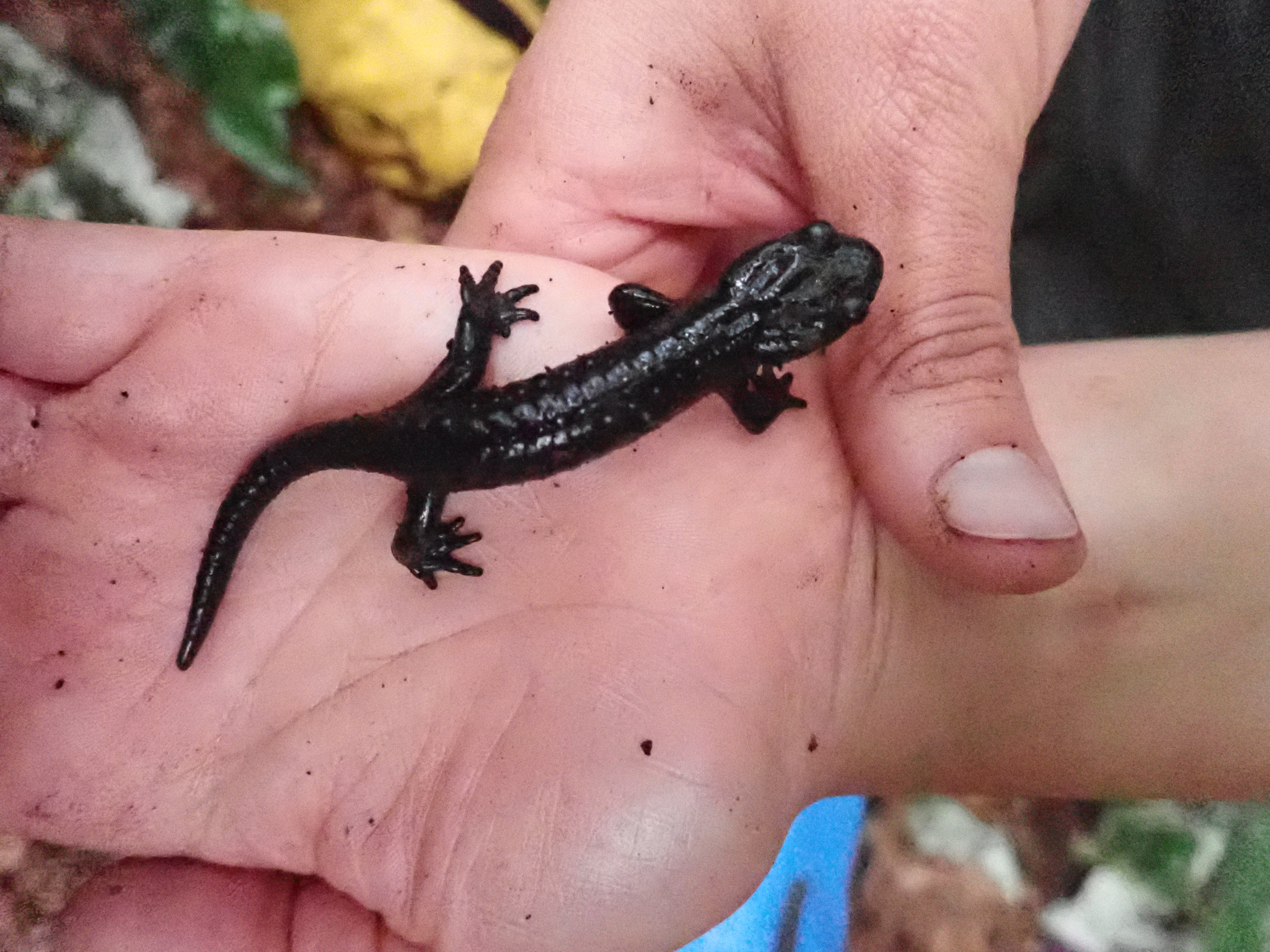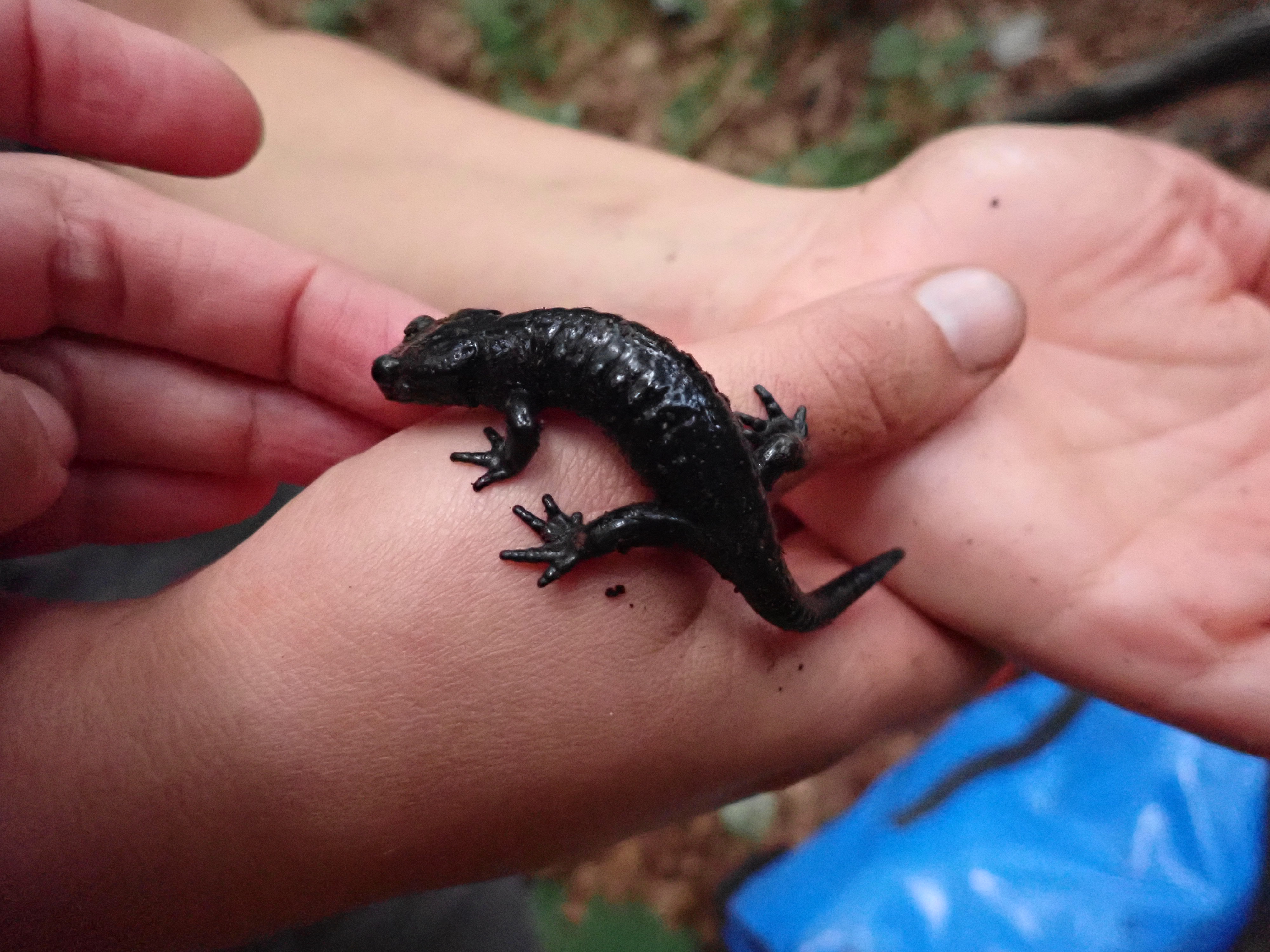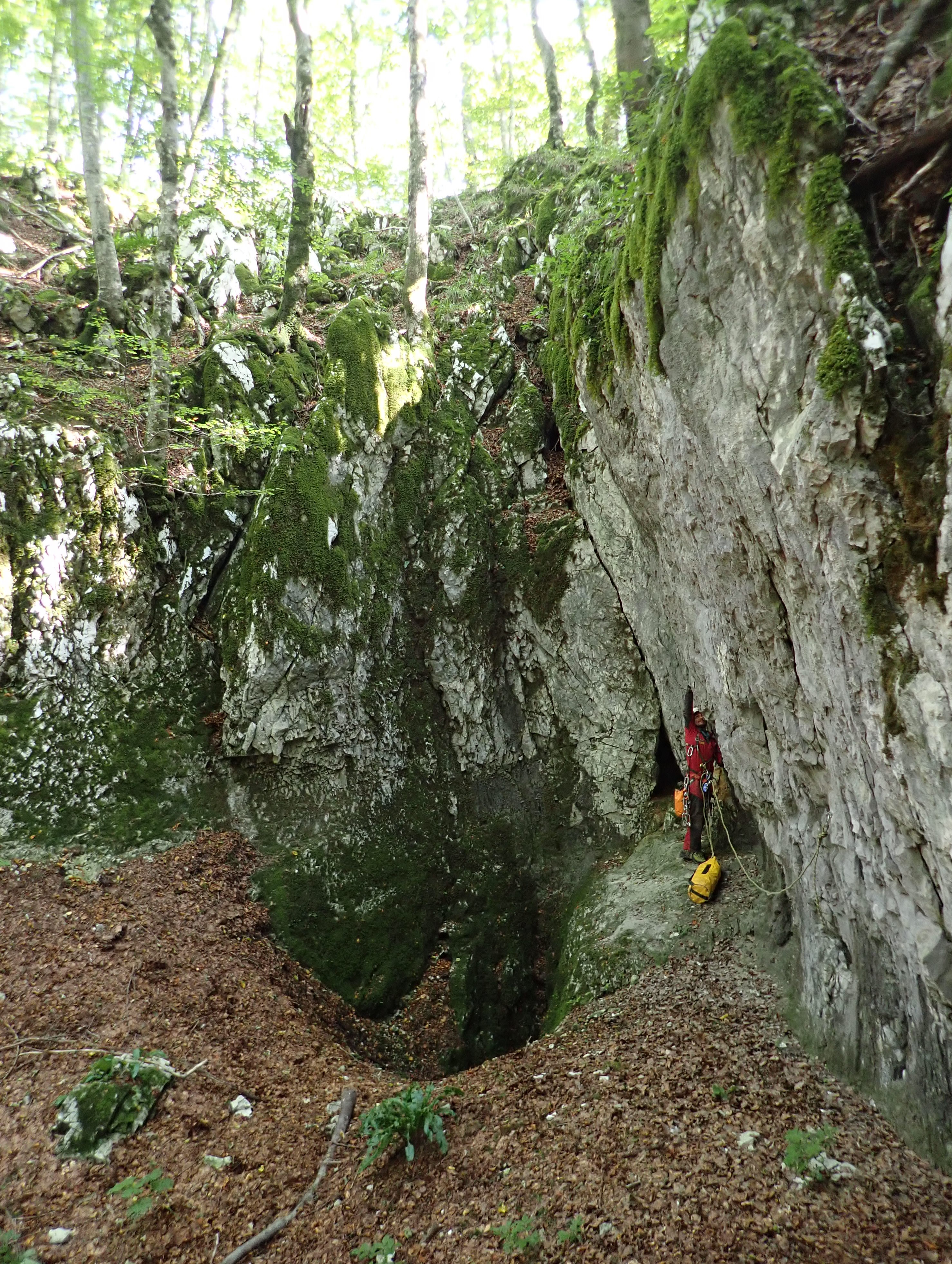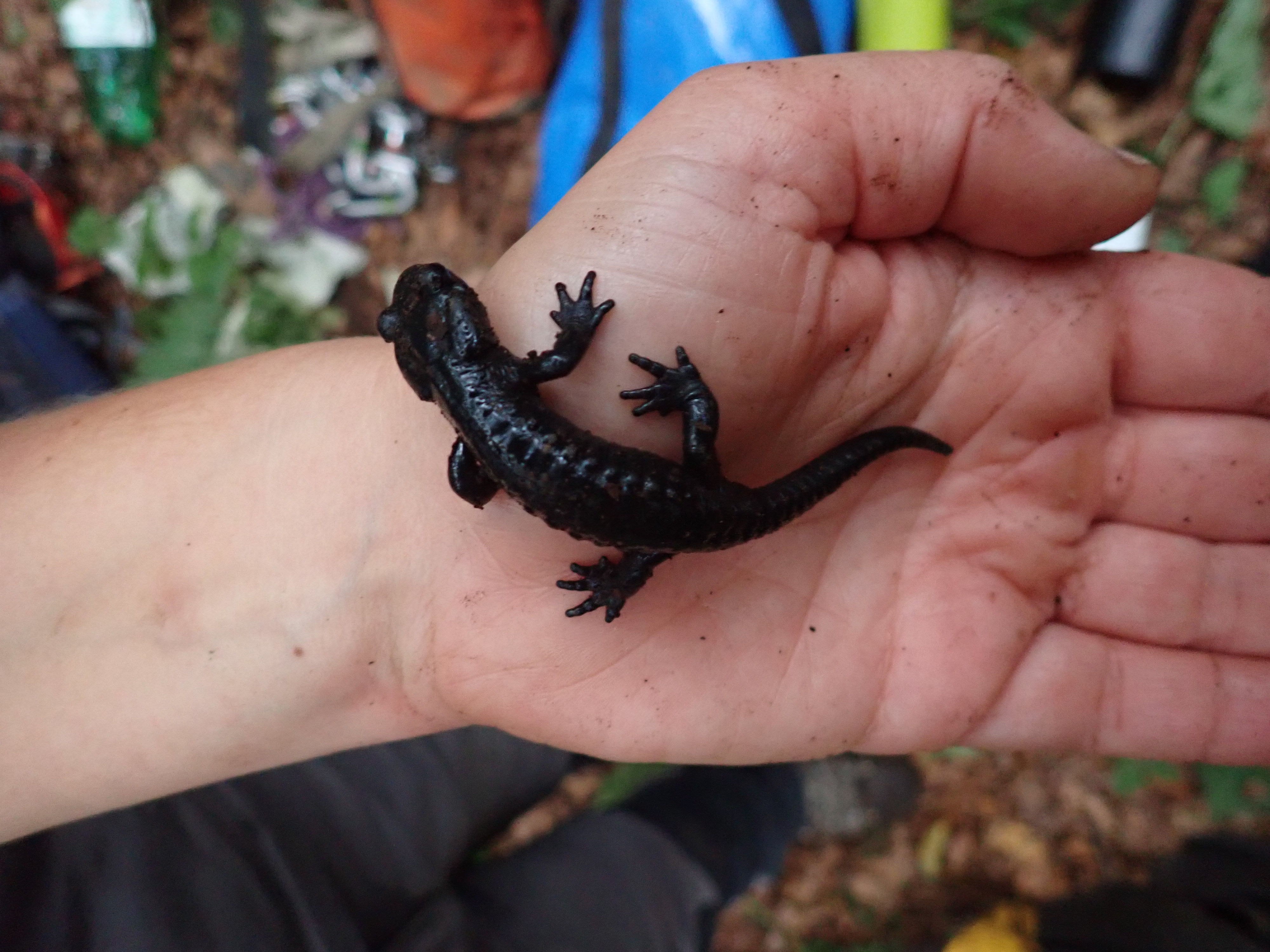
Due to its distinctly black or dark brown body, the alpine salamander is very easily distinguishable from other species of amphibians. It defends against predators by spraying neurotoxins from its parotoid glands starting from behind the head and extending along the body.
It is the only amphibian in Croatia to give birth to live young. The gestation period lasts two to three years, depending on the elevation of its habitat, and one to two fully formed young are born.
Alpine salamanders prefer higher elevations with cold and wet conditions. Although they don’t drink water, they absorb it through their skin as they do oxygen to breathe, like many other amphibians, which is why their body needs to stay moist. For this reason, they are active at night or during the day after rainfall and in high humidity or cloudy conditions.
During the day, they hide in holes in rocks or the ground, under leaves, in tree roots or other dark and damp areas, making it hard to spot them.

Crni daždevnjak (Salamndra atra) 

Crni daždevnjak (Salamndra atra)
They are a strictly protected species, directly threatened by habitat destruction, intensifying and expanding of agriculture on their habitats, killing by road traffic, air and soil pollution, acidification, and climate change as the universal threat to the entire planet.
In Croatia, they have so far been found in the mountainous regions of Žumberak, Ćićarija and Gorski Kotar. In September 2004, they were spotted in the area of the Plitvice Lakes National Park for the first and only time, specifically in the Čorkova uvala old-growth forest. Efforts to find them in the Park area have since then been unsuccessful. Luck struck in September 2023, when members of the Croatian Biospeleological Society, working on the project of mapping caves and pit caves in the Park, found an alpine salamander in the Lipojka pit cave, near Ličko Petrovo Selo. This extraordinary find after almost 20 years of constant searching proves the presence of the species in the Park area.

